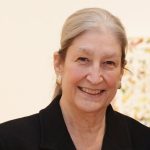Baroque artist Artemisia Gentileschi (1593?1656?) was internationally famous during her time. Not only did Europe?s most powerful commission her paintings, they wanted self-portraits for their collections. Poets found her a worthy muse for their verses and her fellow painters aspired to have her as their sitter. To her contemporaries, Artemisia was a true ?leading lady? of the art world who painted for England?s king and Tuscany?s grand duke. To one patron she famously quipped, ?My Lordship, I?ll show you what a woman can do.?
Her daring affirmation continues to be true today. Several newly discovered works have surfaced in the last five years. One noteworthy example is Mary Magdalene in Ecstasy, attributed by scholar Gianni Papi, who will be presenting his research in Florence on May 7, as part of the conference entitled ?Artemisia Gentileschi: Interpreting New Evidence, Assessing New Attributions?. Some new ?Artemisias? have been shown at significant exhibitions around the world. Others have attracted far-reaching attention from the press and garnered enthusiasm at private auctions. Today, Artemisia enjoys quite a following?not only with art investors but with art lovers who are fascinated by her talents and the turmoil that characterized her personal life: she endured a public rape trial as a young woman, faced a tumultuous marriage and lost multiple children.
A vast amount of archival information regarding Artemisia?s personal life has come to light in the last five years and is growing proof of the artist?s success in her lifetime. Also on May 7, scholar Francesco Solinas will be sharing findings about Artemisia?s persona and modus operandi as evidenced by a collection of the artist?s love letters he discovered and published. ?There is a lot to be unpacked in those letters,? explains Dr. Sheila Barker, director of a research program on women artists at the Medici Archive Project and the conference?s organizer. ?Love letters are full of intimate, inexplicit references, especially if the writer is married to someone else and knows her letters might be intercepted. This makes them particularly challenging for the twenty-first-century reader to interpret. Still?they are stepping stones that allow us to probe into the artist?s psychological life, although we can?t necessarily take her statements at face value. A historical female artist of great talent who is so fully fleshed out by artworks and documents is hard to come by and one of the reasons why Artemisia inspires such enthusiasm.?

Dr. Barker?s own contribution to the conference focuses on Artemisia the entrepreneur, spotlighting the financial strategies and marketing techniques the artist devised to jumpstart her career. ?The more we learn about how Artemisia started her painting business in Florence, the more we can fully appreciate her. It also adds to our general knowledge about how artists lived and worked in the seventeenth century,? says Barker. ?Artemisia?s Florentine period was a dynamic, colorful epoch. Opera was beginning to flourish. Galileo?an acquaintance of Artemisia?s?was perfecting his telescopes. Don Antonio de? Medici, the alchemist, was developing his own recipes and the grand duchesses, Cristina di Lorena and Maria Maddalena [mother and wife to Cosimo II respectively], were driving forces in Medici politics. Florence was becoming a cultural world capital and this was one of the reasons Artemisia came here.?
Artistically speaking, Artemisia?s oeuvre is large and not without controversy. She was an extremely mobile artist whose production was influenced by an ever-changing workshop and various moves to Florence, Rome, London, Naples and Venice. Art historians have yet to agree about her changing style?another reason behind the Florence conference.
These factors also explain why the title of keynote speaker Mary Garrard?s inaugural address, on May 6 in the Palatine Gallery, is ?The Eye and the Archive,? referring to the two tools needed to reconstruct the artist?s oeuvre.
?It?s been 30 years since the first comprehensive studies of Artemisia Gentileschi?s life and works were written. We?ve reached a threshold of discoveries and diverging opinions, and the time has come to see if we can find common ground in an international forum,? Barker says. ?Up until now, Artemisia exhibitions and conferences have been lacking in equal participation from both sides of the Atlantic. In this event, there are speakers from various parts of the world?Italy, Belgium, the United States and Australia. Many fields are represented in the speakers and in the audience as well?restorers, collectors, curators, university professors and writers. I believe Alexandra Lapierre will be in the audience; her best-selling novel Artemisia was the result of her extensive archival research that has been a springboard for scholars. Our goal is to represent as many views as possible?and to build greater consensus regarding new attributions and new research. Our resulting vision of Artemisia will surely be closer to the complicated truth, a truth far more fascinating than fiction.?
On May 6 and 7, the Florence-based conference on Artemisia Gentileschi will be held at the Pitti?s Palatine Gallery and the British Institute?s Harold Acton Library. For complete conference program, see theflr.net/artemisiaconference. For more on women artists, restoration and events in Florence, visit advancingwomenartists.org or facebook.com/advancingwomenartists or write to linda@advancingwomenartists.org.








